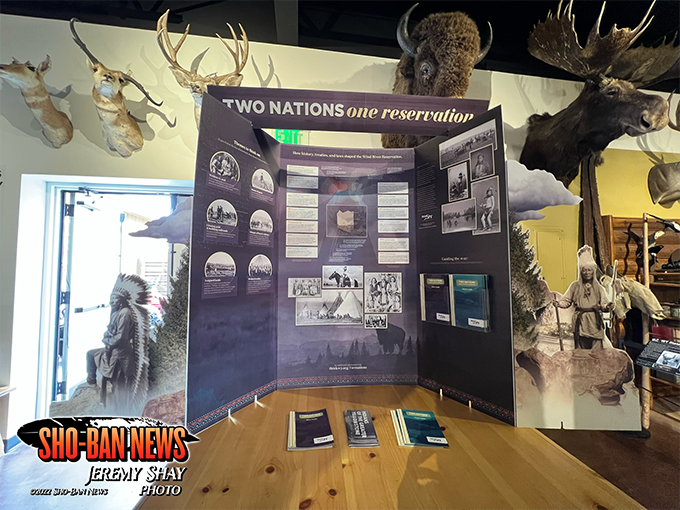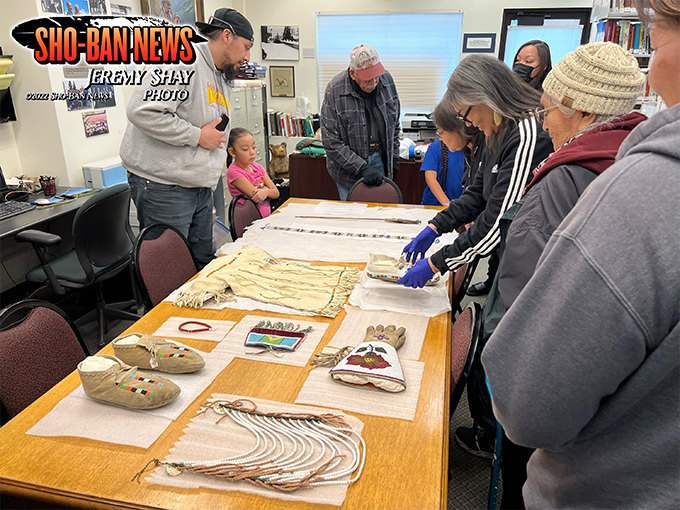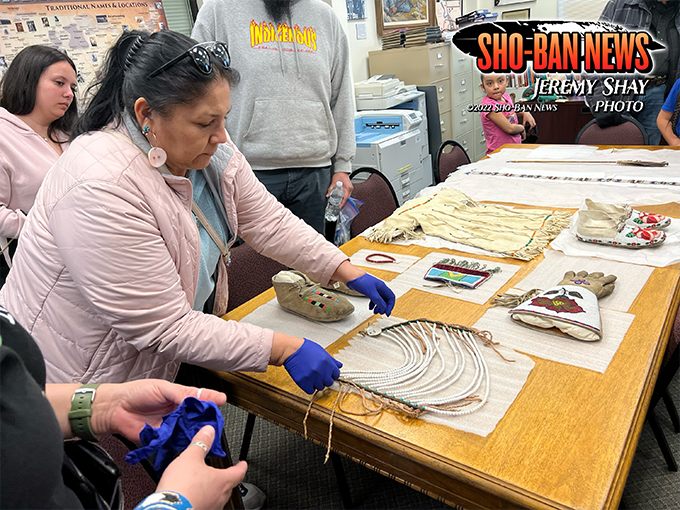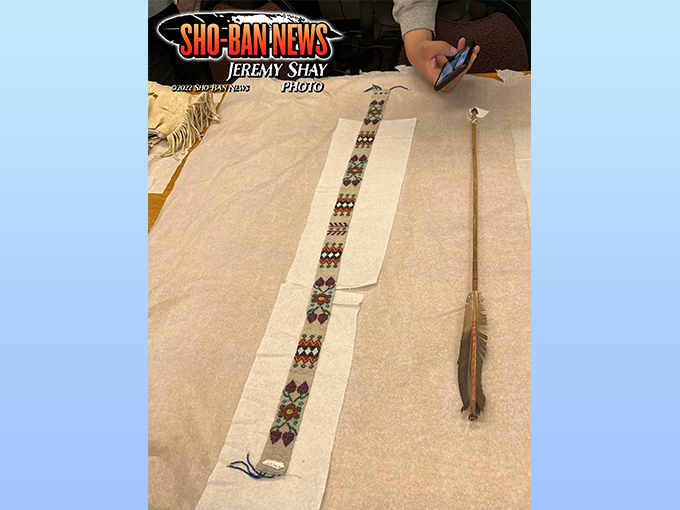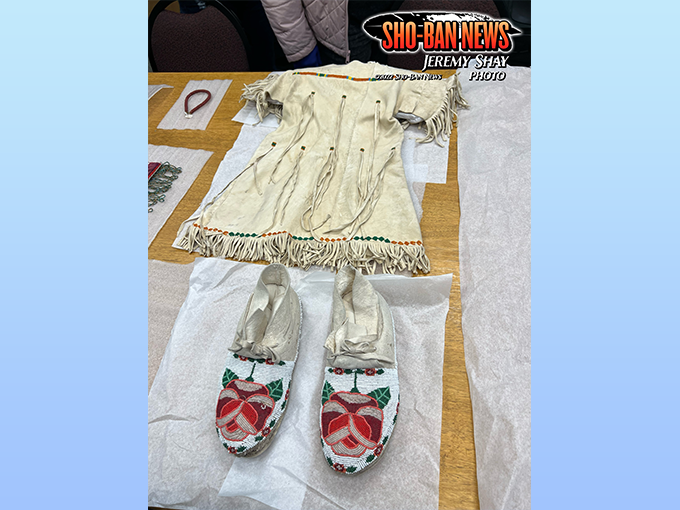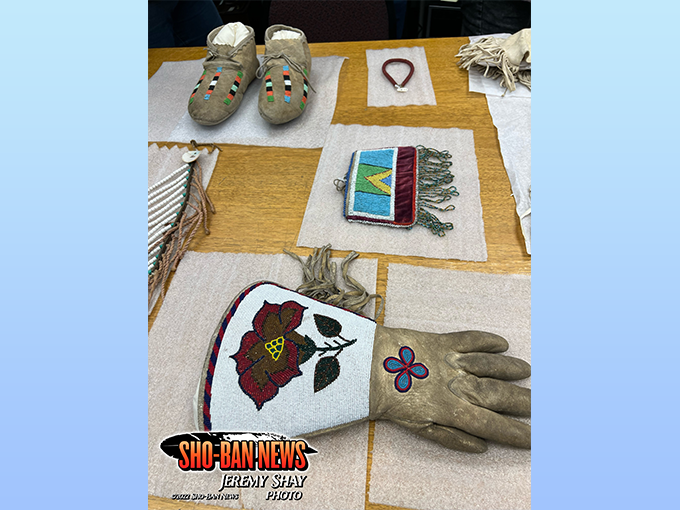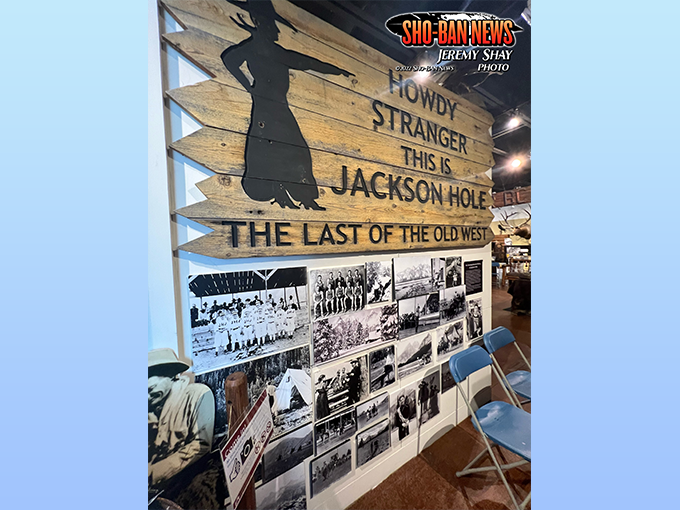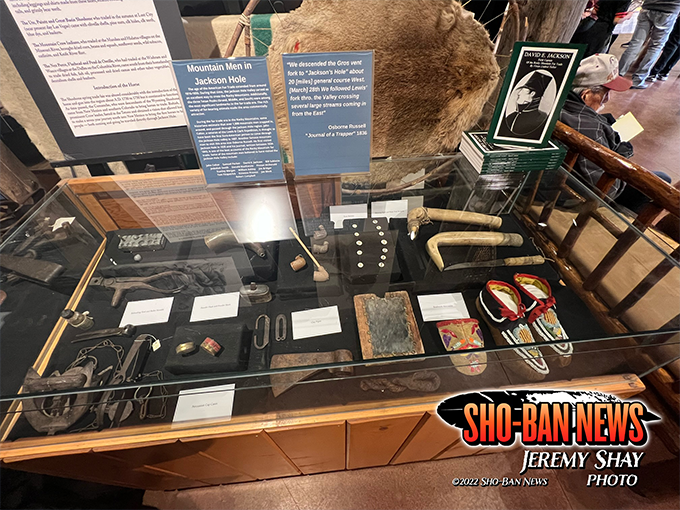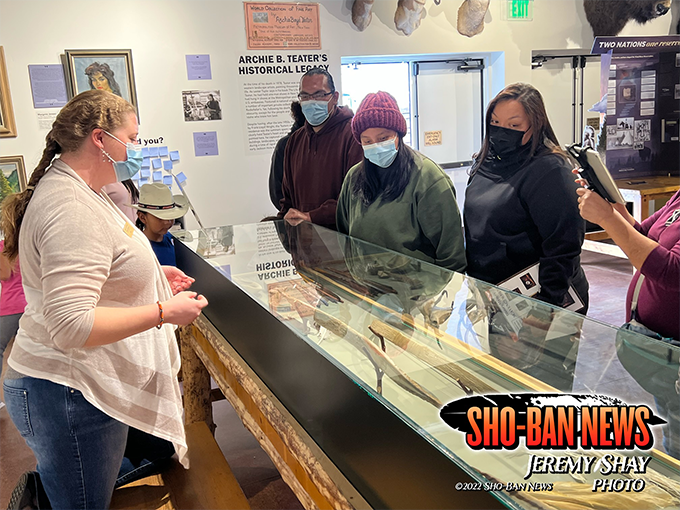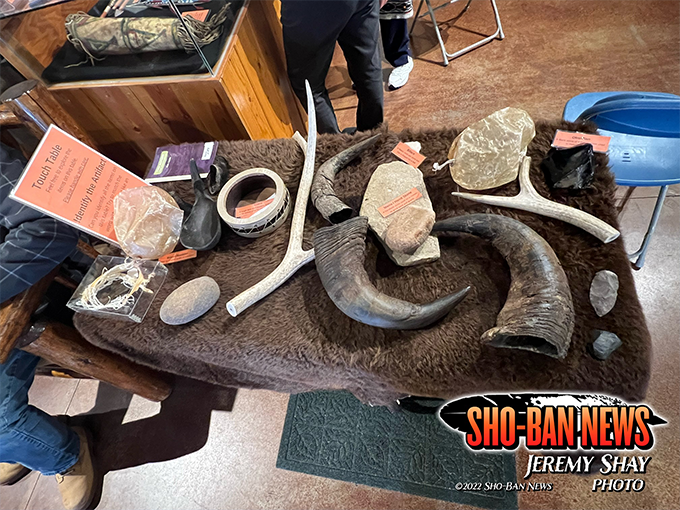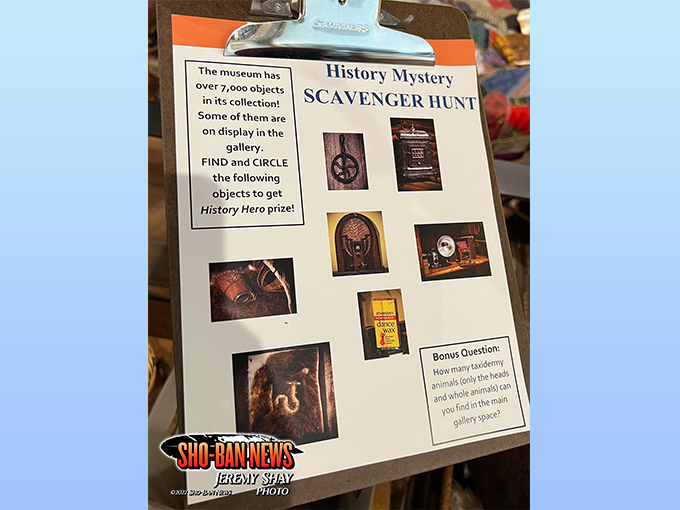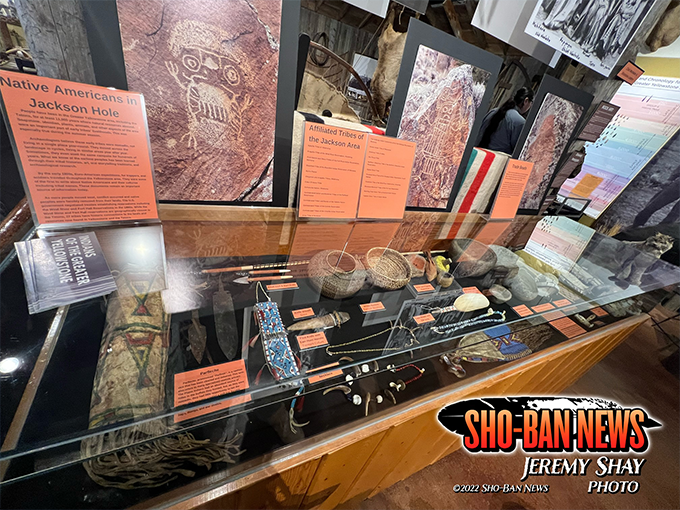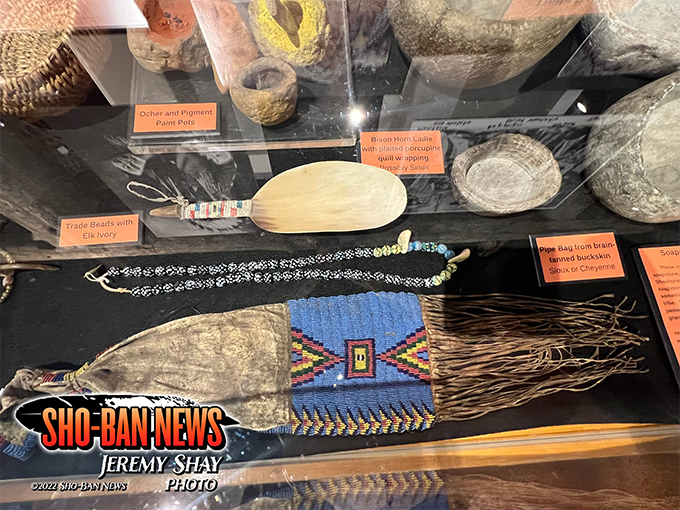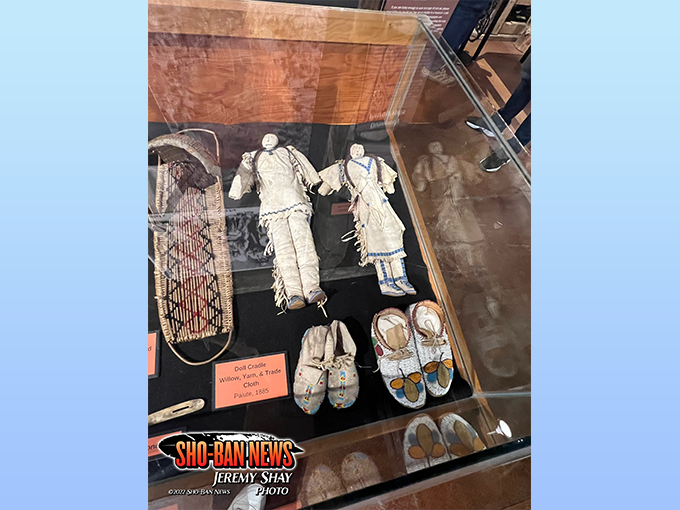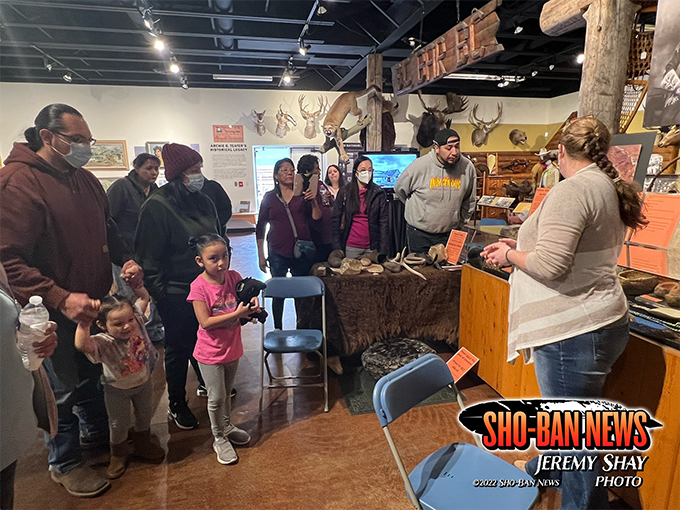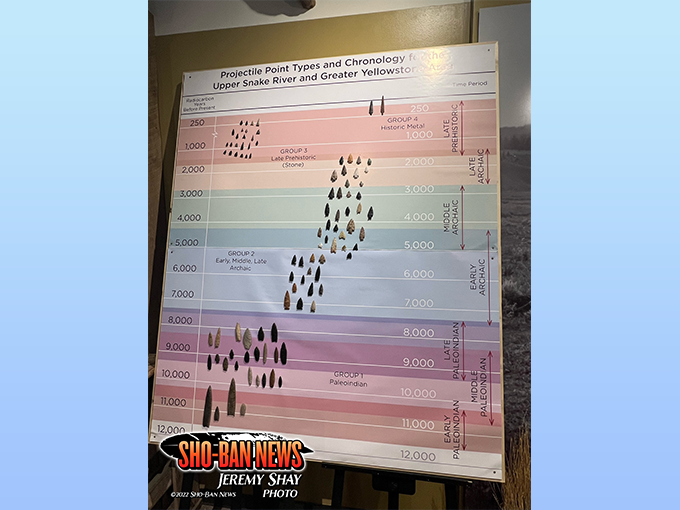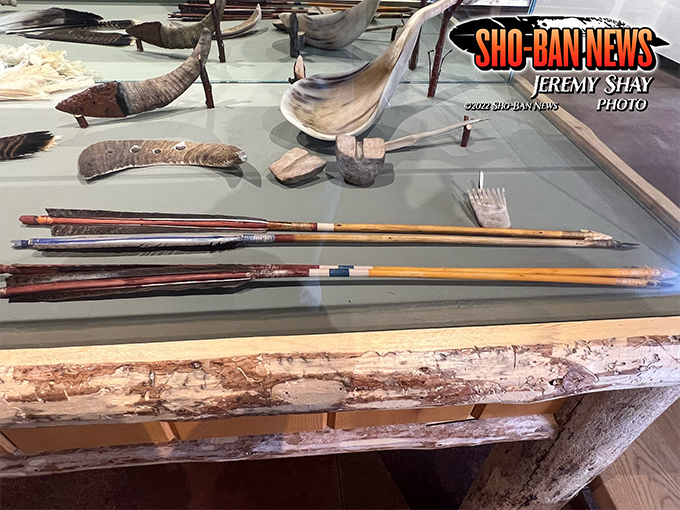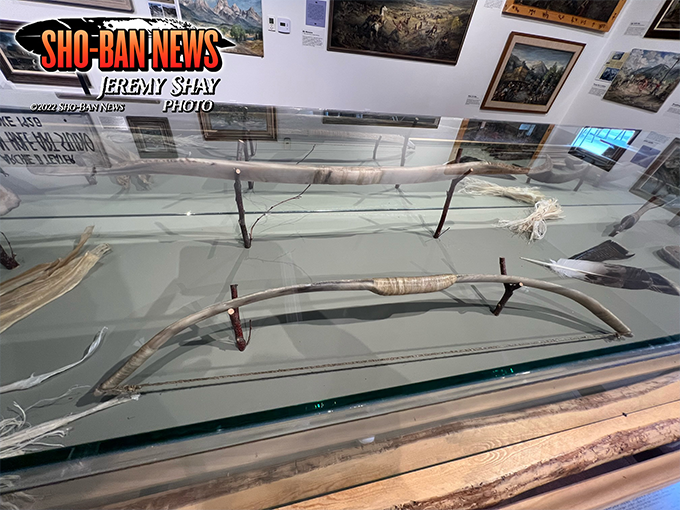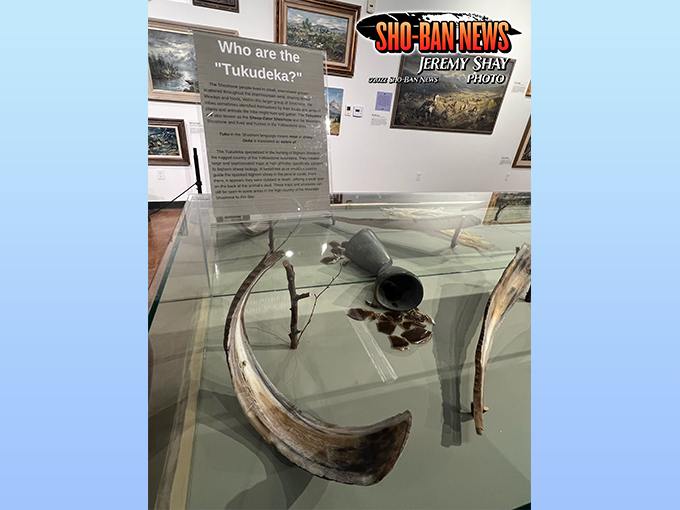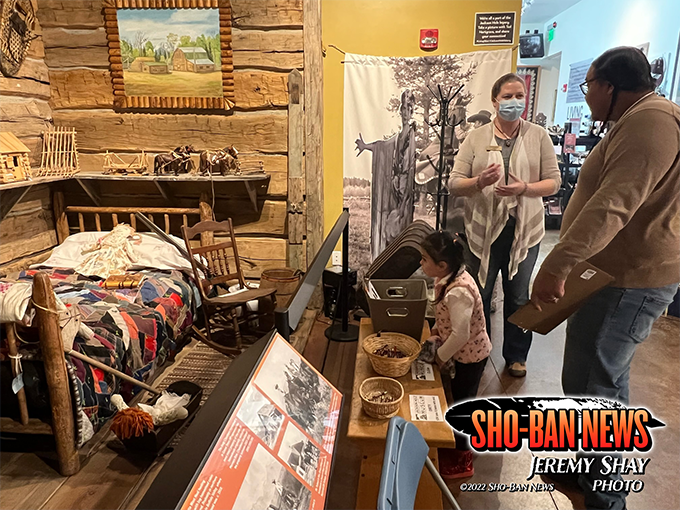Tribal members visit Jackson Hole Historical Society & Museum
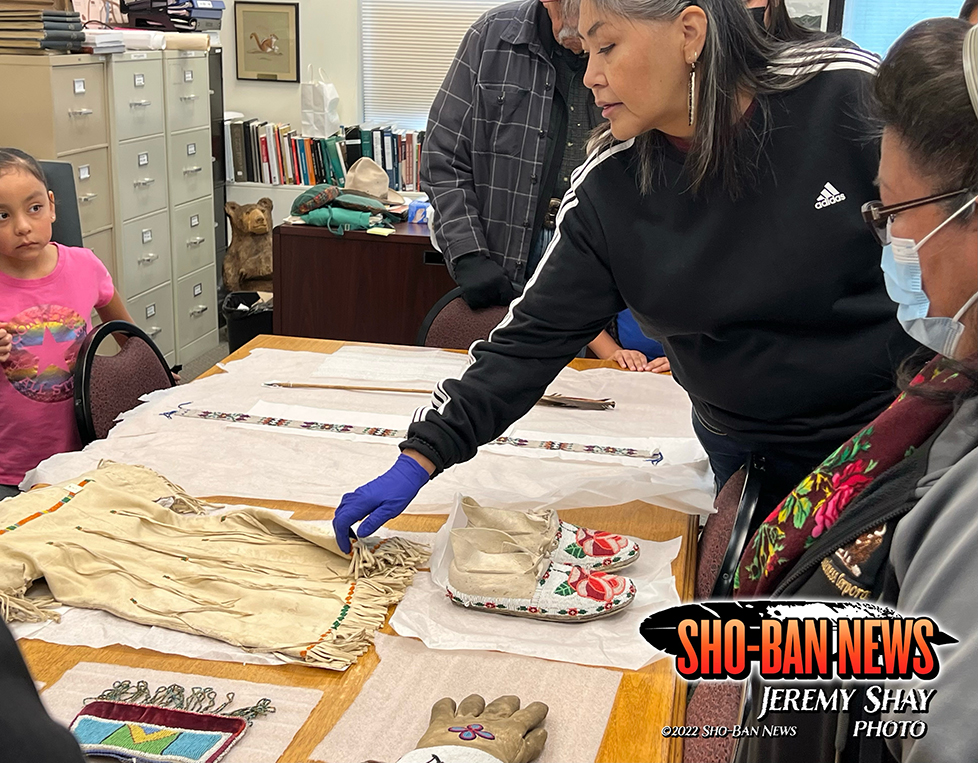
Gwen Towersap wears gloves to examine a buckskin dress at the Jackson Hole Historical Society & Museum on March 25.
By JEREMY SHAY
Sho-Ban News
JACKSON, Wyo. — The Shoshone-Bannock Tribes Language and Cultural Preservation Department organized a tour for tribal members at the Jackson Hole Historical Society & Museum on Friday, March 25 in Jackson – an original territory of the Tribes.
The museum visit was the first event of the two-day trip to Jackson. The museum tour included a lunch with sandwiches, fruit and snacks from the LCPD.
LCPD Original Territories Historical Researcher Nolan Brown said the purpose of the trip is to bring tribal members out to the original territories and to observe the exhibits and Shoshone-Bannock artifacts that have been preserved.
“The Jackson Hole Historical Society has engaged with our tribes and council, and in 2021 they passed a resolution that we work together and create new exhibits for the new museum they are building over the next few years,” said Brown.
The Jackson Hole Historical Society & Museum Executive Director Morgan Albertson Jaouen welcomed those in attendance and gave an introduction to the visiting tribal members detailing the history of the museum. Jaoeun explained the museum was founded in 1958 by two Jackson Hole residents Slim Lawrence and Homer Richards. Lawrence was a self-described collector of historical photographs and objects, which lead him to teaming up with businessman Homer Richards to start up the museum. Richards owned the business space in downtown Jackson that provided the original museum location.
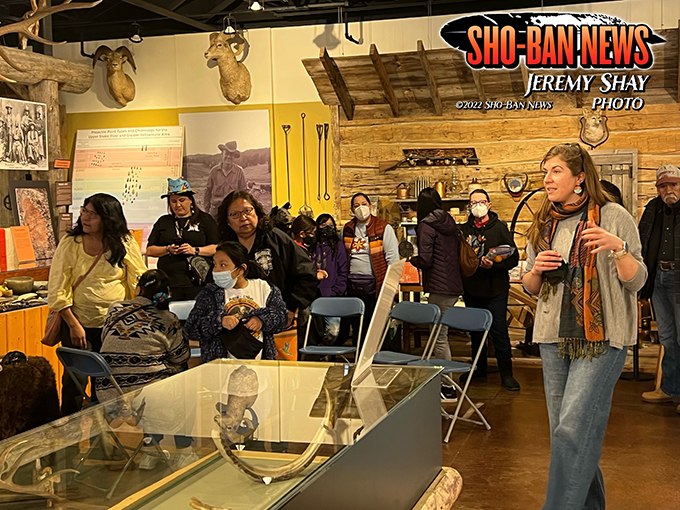
Jackson Hole Historical Society & Museum Executive Director Morgan Albertson Jaouen welcomes
the tribal members in attendance.
“Our collection has grown, predominately from donated items over the years. When we introduce our museum and what we do here, we share that we help tell the human history of the Tetons and of this valley — that it extends back over 11,000 years ago from the first people who came into the valley,” Albertson Jaouen said. She continued to explain the stone and glyphics documented in the museum, coming from the thousands of years of Indigenous people’s existence in the valley, have since been found by archaeologists in the last hundred years.
Albertson Jaouen said the museum has a number of Shoshone-Bannock pieces on display. She said the museum is thrilled to have the tribal members visit and looks forward to the feedback and ideas for the exhibits. “We also have been talking with the Language and Culture department because we are in the process of building a new museum in Jackson Hole. We want to feature a Native American collection and stories to go with the collection.”
The Jackson Hole Historical Society & Museum staff is planning a trip to visit the Shoshone-Bannock Museum in Fort Hall in the future.
In addition to the main gallery, tribal members were able to visit the research and archive room where additional Shoshone-Bannock identified items were pulled and put on display. Participants explored the various artifacts and items that are kept at the museum. Items include beaded moccasins, gloves, dresses, bags, as well as hunting tools, arrows and feathers. Participants were able to examine the items after wearing protective gloves to preserve the integrity of the artifacts. The museum also features informational displays that include history of the Shoshone-Bannock people, and other surrounding tribes.
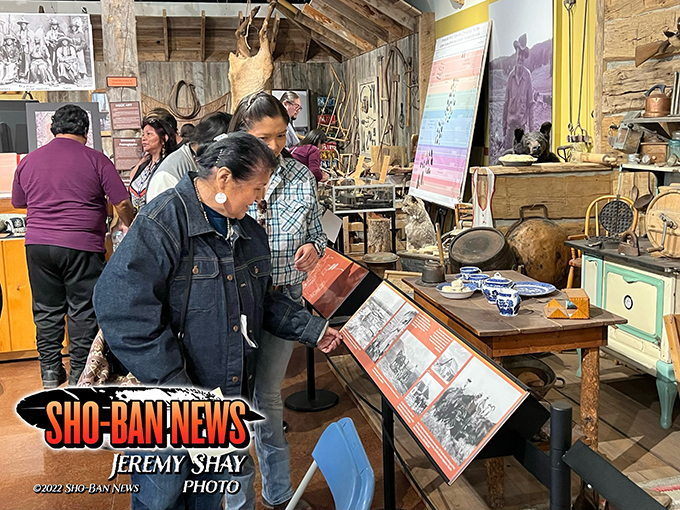
Nancy Nacki and Hovia Edwards look at displays.
The Language & Cultural Preservation Department had over 80 tribal members sign up to attend the museum trip with funding through the Tribal Practices for Wellness in Indian Country Grant. LCPD Original Territories Historical Researcher Nolan Brown said this is the fourth year of the grant, and it is coming to the end. “We did reapply and hopefully we receive that again so we can keep doing activities like this,” said Brown. “It’s funded a lot of things that our people have enjoyed doing like traditional games, discussion forums, serving traditional foods and distributing chokecherry trees to plant.” Brown said this is the furthest they have traveled and they hope to do more through the grant in the future.
View slideshow below:
